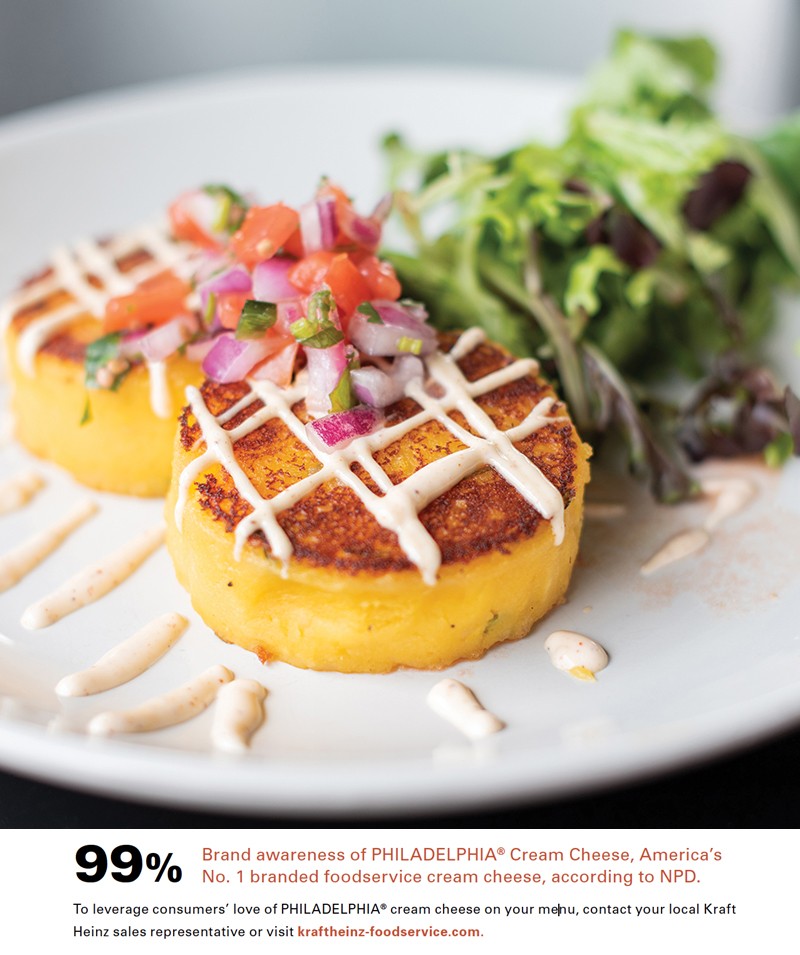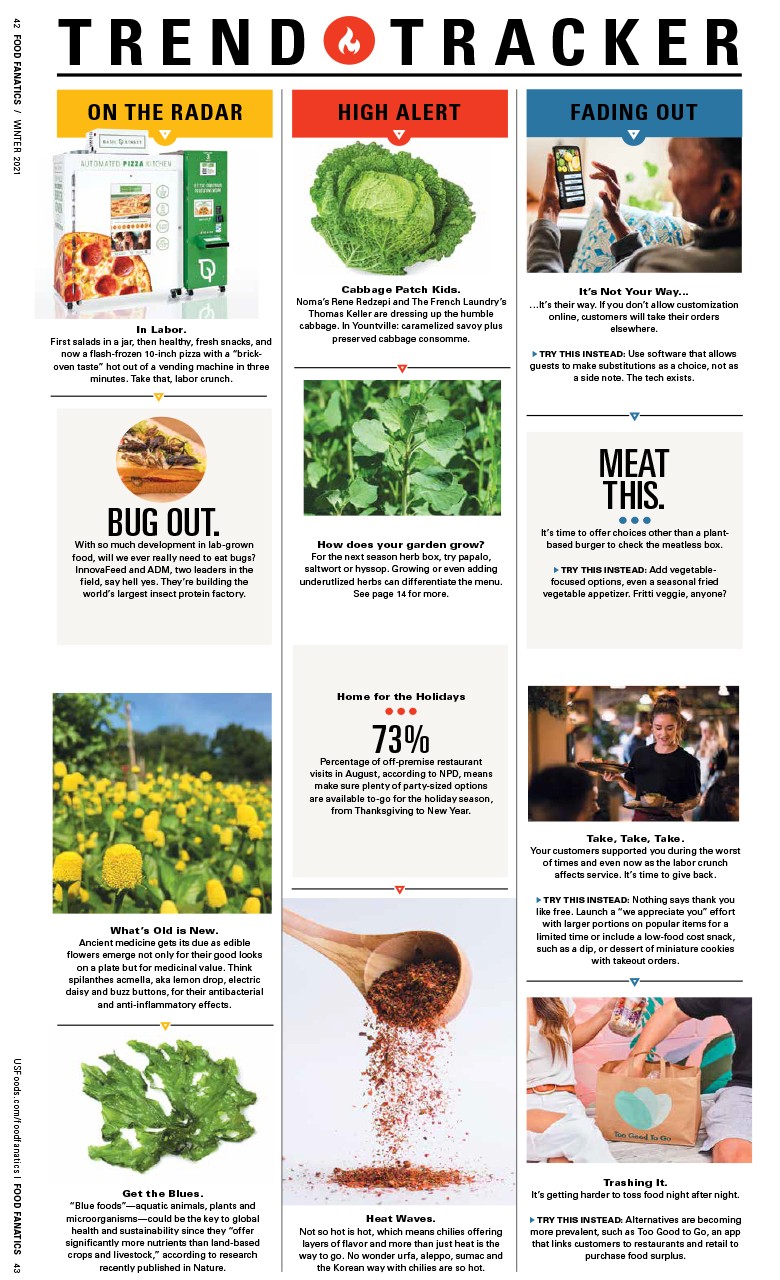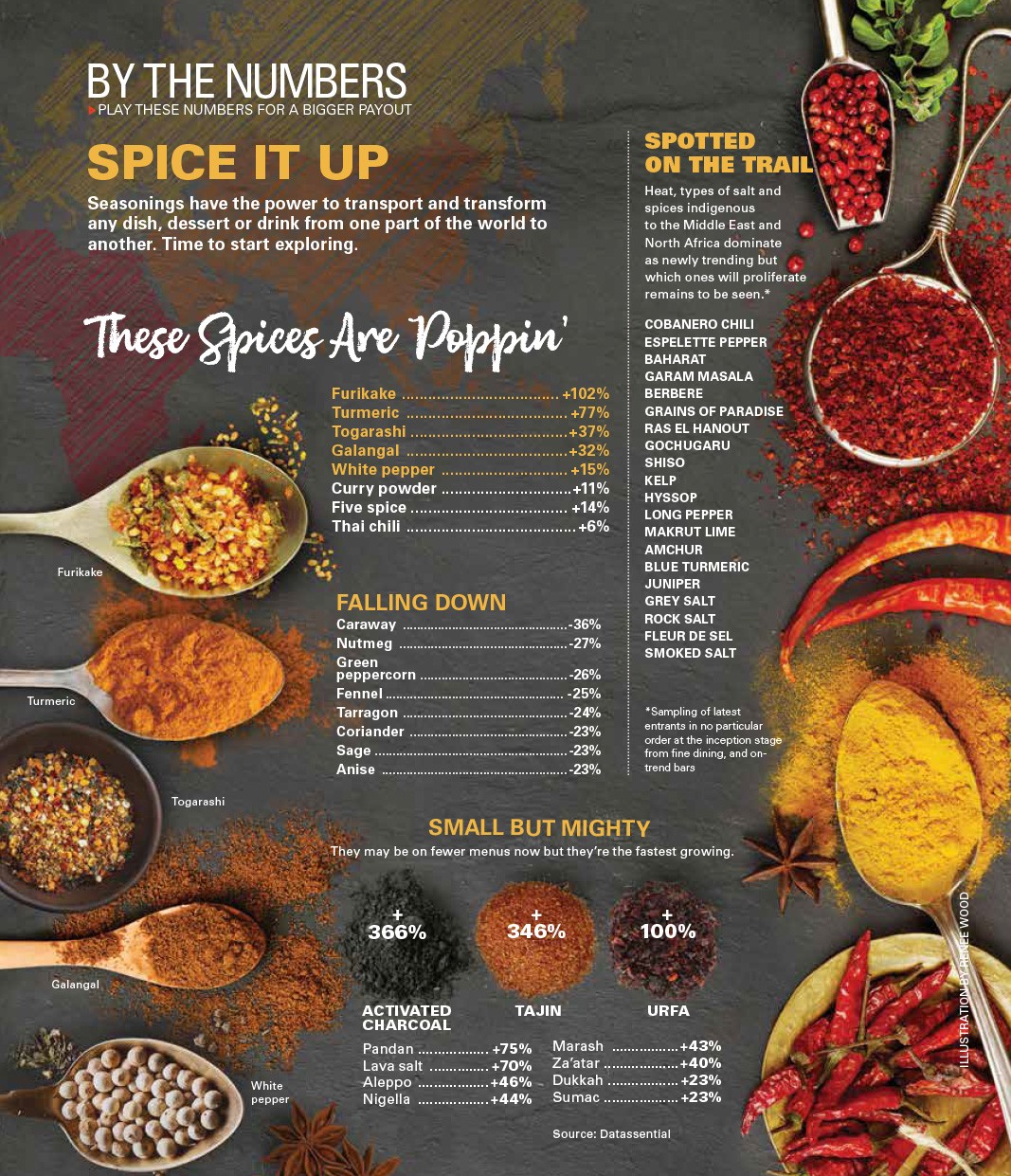SUPER PRO CONDIMENTS
Ready for any menu challenge
 Certain condiments are so solid, they could score in numerous ways, yet they often don’t. That’s changing as chefs recognize their potential for diversifying the menu and solving operational issues.
Certain condiments are so solid, they could score in numerous ways, yet they often don’t. That’s changing as chefs recognize their potential for diversifying the menu and solving operational issues.
 Take strongholds like ketchup for fries and burgers, mayonnaise for sandwiches and cream cheese for bagels. As a base for innovation, they add excitement to menus for all concepts, while easing labor, controlling inventory and side-stepping supply chain constraints.
Take strongholds like ketchup for fries and burgers, mayonnaise for sandwiches and cream cheese for bagels. As a base for innovation, they add excitement to menus for all concepts, while easing labor, controlling inventory and side-stepping supply chain constraints.
“When you don’t have the staff that you need, you must be more innovative with SKUs (stock keeping unit),” says Jim Messinger, a chef and graduate of the Culinary Institute of America who has owned restaurants and worked with multi-unit restaurants developing menus.
By using traditional condiments as a foundation, chefs can explore and capitalize on trends to build more complex flavors. Better yet, the familiarity of core condiments comes with a trust level among diners so that operators can innovate and appeal to all palates, adventuresome or not. Some ideas:
KETCHUP
The tomato in this favorite condiment gives it an edge: It packs umami, the savory fifth sense that amps up flavors.
Messinger recommends ketchup as the base for developing a house sauce that can be used for just about any protein, from ribs and chops to shrimp and chicken, as well as sturdy vegetables such as whole roasted cauliflower, squash steaks or beefy portobello mushrooms.
The flavor directions are seemingly endless and can amplify any cuisine, American or global. To get it right, Messinger recommends following a matrix. Start with four parts ketchup, one part sweet, one part acidic and one part contrasting flavor or seasoning. For example, ketchup, sanonto (Japanese brown sugar), mirin, rice vinegar and shichimi togarashi, a chili seasoning for a sauce with an Asian spin. Or ketchup, figs, vinegar and harissa for a spicy, botanical Middle Eastern take.
“You can really jump around and have fun with it,” says Messinger, who works with operators on menu development through his role with Kraft Heinz as culinary expert.

CREAM CHEESE
The condiment that’s synonymous with bagels has arguably been underutilized as an ingredient. For chefs, particularly pastry chefs and loyalists of PHILADELPHIA® cream cheese (which enjoys 99% brand awareness among consumers, according to food research firm Datassential), the product is indispensable for its creaminess and signature tang from fermentation. It doesn’t break sauces and adds chew to ice cream, for example.
“Such attributes are ideal for rounding out sauces when more personality than butter is needed, making it easy to stir into any pasta sauce, dip or filling,” says Holly Johnson, head of culinary for foodservice at Kraft Heinz.
“With a brand as well known and beloved as PHILADELPHIA®, it makes sense to call it out on the menu,” Johnson says. “But in so many applications where it’s not visible, you can use it as a tool for building flavor in the background. It’s a tool in your tool belt and your business of cooking.”
At the two-location Savanna in Chicago, vanilla-infused cream cheese tops grilled pound cake French toast, strawberry compote and a balsamic reduction. It also accompanies blueberry banana crepes. The cream cheese adds another dimension to the flavor profile of both breakfast options, bringing all the components together in a crescendo of something extra special.
MAYONNAISE
The mix of eggs, oil and acid make this condiment a strong base that crosses borders for any sauce or dip by incorporating indigenous spice. Aioli works the same way for hot and cold applications. Powered by garlic, aioli has become ubiquitous, but it can go further as a spread and finishing sauce with the help of contrasting heat or a punch of flavor.
Mayonnaise is the base for chipotle aioli that complements a variety of dishes at Savanna, such as the turkey burger and llapingachos, Ecuadorean potato pancakes.
At the Clam in Manhattan, harissa aioli accents crispy skate wing with pea shoots and radish, while Meyer lemon aioli and pepper cress is served with lobster arancini. Masala aioli can be found in sandwiches at American Tandoor in Tysons, Virginia, while lemon habanero aioli accompanies jerk chicken lettuce wraps at San Pedro Cafe in Hudson, Wisconsin.
“Really, it’s limitless,” Messinger says. “Once you have a matrix for any base ingredient, you can be innovative, control costs and inventory, and keep customers coming back for more.”
GETTING SAUCED
Ketchup can be the base for barbecue sauce, but it’s also a solid start for a sauce or finishing ingredient. Some possibilities:
KETCHUP: 4 parts
SWEET: 1 part honey, molasses, mirin, rock sugar, dried figs or dates
ACIDIC: 1 part citrus (any kind with zest), passion fruit, rice vinegar, cane vinegar, black lime or yogurt
SEASONING: 1 part liquor (bourbon or dark tequila), chiles (any kind) smoked paprika, sumac, garam masala, herbs (fresh or dried)



